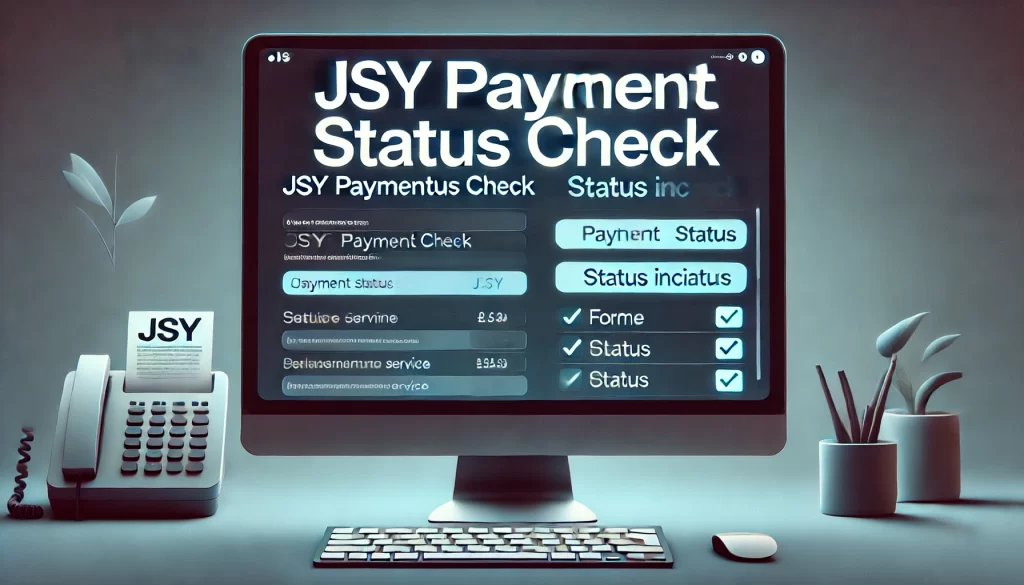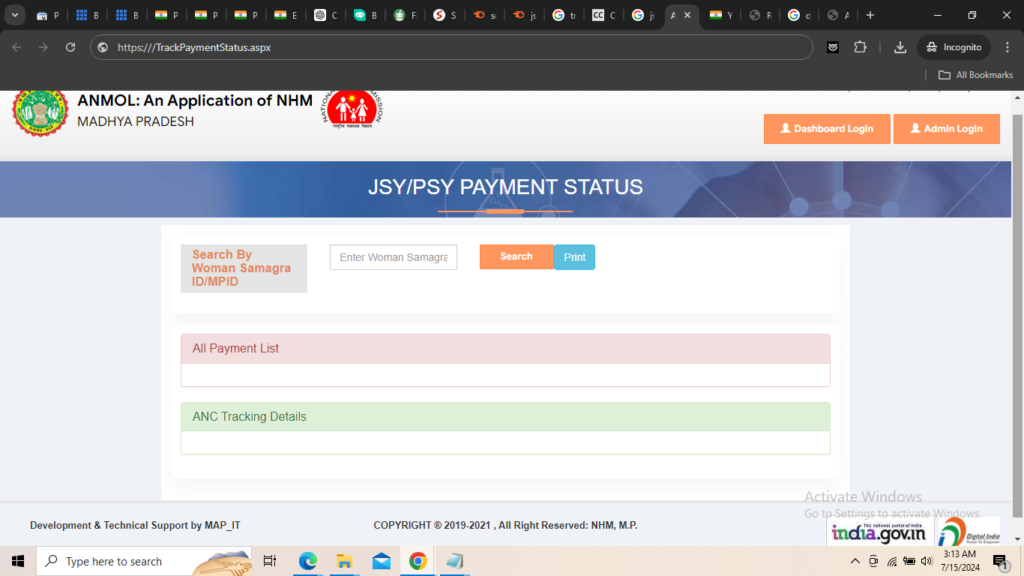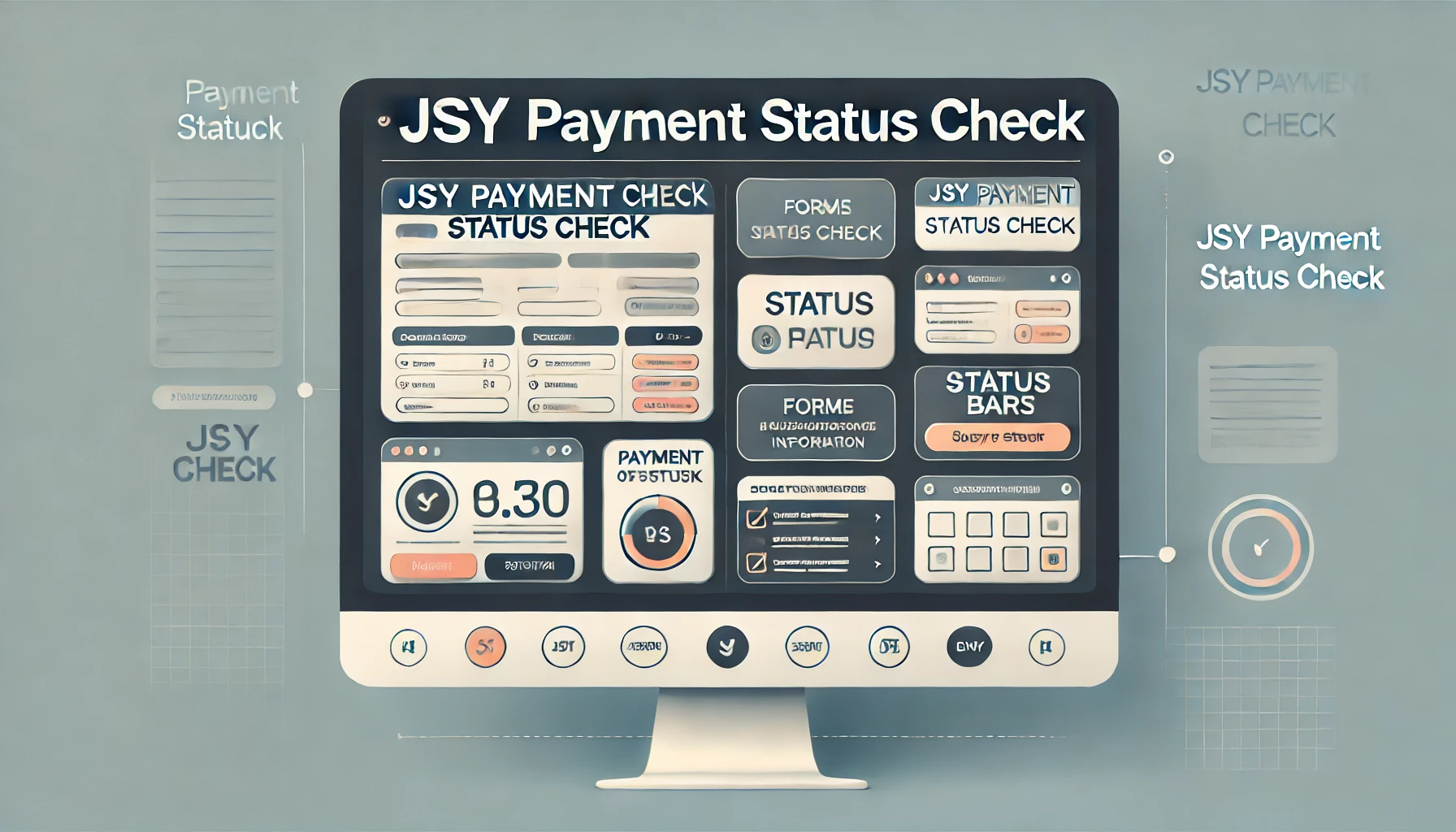The Janani Suraksha Yojana (JSY) is an Indian government program designed to reduce maternal and neonatal mortality by promoting institutional delivery of babies among poor pregnant women. Beneficiaries can also track their Jsy Payment Status Check through this payment status check, which helps them a lot. The feature thereby brings transparency and speed to the disbursement process, allowing expectant mothers to receive just-in-time assistance for access to safe childbirth services. This will cut down on the time taken in processing paper work and also make it easier for people to know their payment status. Auto-enabling Common Track System One of the biggest prosumers (mixed-word consumers and producers) in rural India is ration dealers.
About Jsy

| Aspect | Details |
|---|---|
| Launched | 2005 under the National Rural Health Mission (NRHM) |
| Objective | To reduce maternal and neonatal mortality rates by promoting institutional deliveries among poor pregnant women. |
| Target Group | Poor pregnant women, particularly those from Scheduled Castes, Scheduled Tribes, and other marginalized communities. |
| Financial Assistance | Provides cash incentives to cover transportation, the cost of delivery, post-delivery care, and to compensate for wage loss during childbirth. |
| Eligibility | Available to all pregnant women delivering in government and accredited private health centers, with special focus on low-income and marginalized groups. |
| Key Features | – Cash assistance directly transferred to beneficiaries.- No restrictions based on age or number of children in many states.- Involvement of ASHAs (Accredited Social Health Activists) to facilitate access to healthcare services. |
| Impact | Significant increase in institutional deliveries across India, contributing to reductions in maternal and neonatal mortality rates. |
| Current Focus | Continues to promote safe maternity while increasing the scale and scope across various regions of India, with an emphasis on underserved areas. |
Janani Suraksha Yojana (JSY) is the largest flagship maternal health intervention under the National Rural Health Mission (NRHM), introduced in 2005 by the Government of India. JSY is primarily directed at bringing down the high maternal and neonatal mortality rates, particularly in rural areas, by enhancing obligatory maternity-related care utilization amongst pregnant women. The program provides a payment package linked to conditional cash transfers and maternal health services that encourages women, especially those from disadvantaged families or socially marginalized communities, to make institutional deliveries. It has helped to create more secure childbirth environments, leading to a sharp drop in possible morbidity and mortality from reasons linked to labor.
Also Check – Vahan Rc Status
Features of JSY
The Janani Suraksha Yojana (JSY) is designed with several key features aimed at improving maternal health and reducing mortality rates among pregnant women and newborns in India. Here are the main features of the JSY:
- Cash Incentives: For every pregnant woman, the scheme offers monetary help to be spent on institutional deliveries in the government and accredited private health centers. This cash incentive is designed to cover the costs of transportation, delivery expenses, and postnatal care, providing significant financial support and tackling the earliest barrier to access to institutional healthcare.
- Target Groups: Low-income pregnant women often belong to Scheduled Castes, Scheduled Tribes, and other marginalized groups. It aims to further create simple and fair access to healthcare services among different segments of society.
- No Age or Parity Bar: Originally conceived with age and parity restrictions, the JSY has since been restructured in several states, making it universal without any bar of age or number of children.
- ASHA worker: Accredited Social Health Activists (ASHAs) have an important role in JSY implementation. They encourage pregnant women to access institutional delivery services, transport them to healthcare facilities, and assist in the process of receiving their cash incentives. Under the scheme, ASHAs receive performance-based compensation for their services.
- Easy disbursement process: The financial assistance under JSY is disbursed at the time of discharge from the hospital, with no intermediary intervention in between, making monetary incentives instantaneous and related to specific institutional delivery.
- Post-Delivery Care: The scheme also includes post-delivery care for the mother and baby, with an additional incentive to ensure appropriate follow-up visits, health checks, and immunizations, which are essential during the early weeks of having delivered a child.
- Countrywide Coverage: JSY is a national program being implemented in all the states and Union territories of India, with selected focused areas known as low-performing states (LPS) having low institutional delivery rates and the worst maternal mortality and infant morbidity indicators, while high-performing states have better indices.
- Integration with Other Programs in Health: JSY is integrated within the RCH program and brings a seamless continuum of care for maternal, newborn, and child health.
These features collectively aim to reduce maternal and neonatal mortality by increasing the number of safe deliveries conducted in healthcare facilities across India.
Impact of JSY
The Janani Suraksha Yojana (JSY) was implemented in 2005 with the objective of reducing maternal and neonatal mortality in India. The scheme’s traits and outcomes are critical.
More Institutional Deliveries: One of the most notable outcomes of JSY has been a substantial rise in institutional deliveries across the country. The scheme has also handsomely rewarded women belonging to the poor socio-economic strata for delivering in medical institutions rather than at home.
Maternal and Neonatal Mortality Rate Reduction: Promoting institutional deliveries, JSY has further led to a decline in maternal mortality rates as well as neonatal death rates. Skilled care at birth reduces life-threatening complications and ensures a safer delivery for both the mother and her baby.
Enhanced Access to Healthcare: JSY has brought millions of women from remote and unreached areas, as well as marginalized sections, into administrative and delivery care folds. It has been of paramount importance to register medical help during childbirth in due course.
Women Empowerment: One of the major outcomes under this scheme is that women now have a certain financial independence and say in their choice for childbirth. Empowering women to make reproductive decisions that meet their own needs also creates a broader impact on society by encouraging health and wellbeing among women and their families.
Increased Awareness: They have helped women improve awareness about antenatal care, postnatal care, and the benefits of births in institutions. This type of awareness is necessary if maternal and child health outcomes are to continue to improve.
Strengthening Healthcare Infrastructure: The extended reach of JSY has led to better infrastructure for the health industry, especially in rural areas, due to increased institutional deliveries. This has led to the renovation and readiness of hospitals and health centers for higher deliveries per unit population, thus improving other overall healthcare services.
Economic Consequences: JSY has the additional effect of reducing the economic burden on families by saving in healthcare costs and providing a part bonus, thus enabling households to save funds that could otherwise be used for childbirth-related medical expenses.
It is evident that overall, the JSY has been a success, and it serves as an example of innovative approaches in public health initiatives, both at national and international levels, towards reducing maternal and neonatal mortality in India.
JSY Payment Details
JSY payments are conditional cash incentives for institutional deliveries among pregnant women, especially from economically weaker sections of society. The intended purpose of these payments is to defray the costs women face in order to have a safe delivery, making it more economically attractive for them. This article focuses on the specifics of payments under JSY:
Payment Structure
Amount of Payment:
Referral States with Low-Performing States (LPS): The states or UTs typically have low rates of institutional deliveries. Clothes for Forest School Dropouts, such as Eachtro, For under ₹1,000 for Urbenum and about 1400 INR for firu frack in Rurban. 306 Pregnut Wimun receiving rural amenities from LPS
Low-Performing States (LPS): The payment in the case of states such as UP and Bihar would be at a higher level compared to LHS. In high-performing states (HPS), i.e.., where health indicators and coverage have been good, the traditional delivery effect is less incentive per birth [0.7; 25%]. . While rural women are expected to get close to ₹700, urban-based women around ₹600.
Additional Incentives:
The community health workers and ASHA workers who motivate women to come to the facility for delivery are also paid under JSY. Typically, they are paid a lesser amount than the beneficiaries, pushing them to back as many women who are pregnant.
Eligibility Criteria
| Eligibility Factor | Criteria Details |
|---|---|
| Target Beneficiaries | Pregnant women, particularly from low-income groups including Scheduled Castes, Scheduled Tribes, and other marginalized communities. |
| Geographical Criteria | Applies to all states and union territories of India, with certain incentives varying between Low Performing States (LPS) and High Performing States (HPS). |
| Institutional Delivery | The beneficiary must opt for delivery at a government or accredited private health facility. |
| Age Limit | Originally set for women aged 19 and above, but many states have removed this restriction to extend the benefit to all adult women. |
| Parity | Benefits are generally available for up to two live births. However, this condition may vary by state. |
| Identification | Valid identification proof and a Below Poverty Line (BPL) card where applicable. |
| Bank Account | A bank account for Direct Benefit Transfer (DBT) of the cash incentive is preferred to ensure transparency and reduce fraud. |
Required Document
| Document | Details |
|---|---|
| Aadhaar Card | Must be linked with the applicant’s mobile number for identity verification and Direct Benefit Transfer (DBT). |
| Voter ID Card | Used as an additional identification document. |
| BPL Card | Required if the applicant is below the poverty line to prove eligibility for higher incentives. |
| Maternity Health Card | To document the medical history and details of the pregnancy. |
| Bank Account Details | Necessary for the direct deposit of the JSY financial benefits. |
| Residence Proof | Local residence proof to establish eligibility in specific states or regions. |
| Birth Certificate of Children | If applicable, to verify the number of previous live births as JSY benefits are generally limited to the first two live births. |
Check Jsy Payment Status Check 2024 Online at anmol.nhmmp.gov.in
To check the JSY Payment Status for 2024 online, follow these steps:
- Visit the official ANMOL portal at anmol.nhmmp.gov.in.

- On the homepage, locate and click on the “Login” button.
- Enter your registered mobile number or user ID and password, then click “Login.”
- Once logged in, navigate to the “JSY Payment Status” section found typically under the maternity services or financial assistance sections.
- Enter your JSY registration number or your Aadhaar number in the provided field.
- Click on the “Submit” button to proceed.
- Your JSY payment status will be displayed on the screen, showing details such as the amount, the date of disbursement, and any pending actions.
- If there are any discrepancies or if the payment status is not updated, contact the helpline number provided on the website for further assistance.
- Log out of the portal once you have checked your payment status to ensure your information remains secure.
Conclusion
It is an important tool in improving the transparency and efficiency of the Janani Suraksha Yojana, which can be performed live through the JSY Payment Status Check function available on the ANMOL portal. Through an online tracker, it enables beneficiaries to keep track of the financial incentives due to them, thus keeping eligible women aware and empowered about their entitlements.
Also Check – Bihar Bhumi Mutation Status Check Online
Jsy Payment Status Contact Details
| Contact Type | Details |
|---|---|
| Helpline Number | +91-11-2306-1501 |
| Email Support | [email protected] |
| Official Website | ANMOL NHM Portal |
| Local Health Office | Contact your nearest government health center or municipality office |
| State Health Department | Contact details can typically be found on the respective state NHM (National Health Mission) websites |

Vikas Gupta is an insightful content creator and financial analyst, educated in economics and public administration. At yojanastatuschecktoday.in, he specializes in simplifying complex government schemes, aiming to empower readers with vital information. His expertise helps citizens navigate and utilize government initiatives effectively, ensuring access to essential updates and developments.
